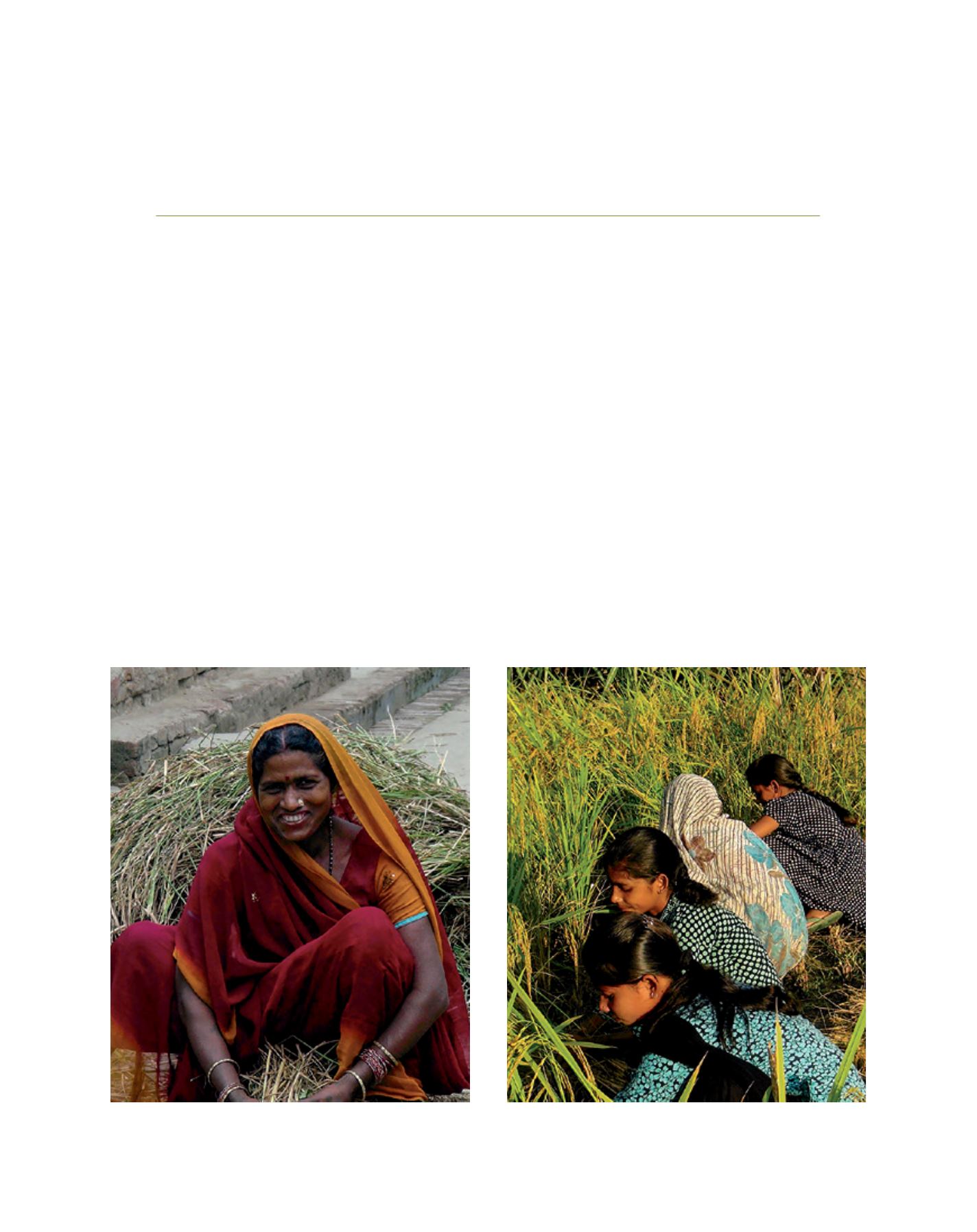

[
] 168
Creating an oasis in rice: the women
farmers of Nagwa Village, Uttar Pradesh
Lanie Reyes, International Rice Research Institute
A
car can usually travel down the narrow concrete
road in Nagwa Village of Maharanjganj district
in eastern Uttar Pradesh. However, during this
second week of November – harvest time in the fields
surrounding the village – piles of rice straw clogged the
way, making passage virtually impossible.
Most of the women, including Prabhawati Devi, were busy
cutting the straw and piling it neatly on jute sacks that were
cut open to serve as mats for the straw. As she was gathering
the edges of the stalks, Mrs Devi said with a smile, “These
are Sahbhagi.” Sahbhagi is what the farmers and villagers
call Sahbhagi dhan, a drought-tolerant rice variety released
in India in 2009.
1
The straw of Sahbhagi dhan is popular
among the women in Nagwa, who feed it to their cattle.
Brick and mud houses, scattered along the road of Nagwa,
are not big enough to shield from view the residents inside
as they go about their daily chores. One woman was cooking
just inside her front door, squinting under the almost-
midday sun and shielding her eyes with her hands from the
smoke of the burning fuelwood. Outside her house, another
woman was threshing rice manually – raising her arms as
high as she could as she smashed a bunch of rice stalks on a
surface covered with fine mesh net. She gathered the sepa-
rated grains with her hands, placing the grains at the centre
of the net and putting the empty stalks neatly to her side. She
rose once in a while to straighten her back from her squat-
ting position. Yet another woman had just returned from
harvesting rice bundles in the field. Women often harvest
rice in staggered shifts because they want to give the fresh
rice stalks to their cattle.
Nagwa looked like a village of women in a flurry of activi-
ties. Their bright saris made them more visible under the
scorching sun.
As more men migrate from rural areas to the cities, women take on the
farming activities they leave behind
Studies show that women contribute 60-80 per cent of the labour
required in rice farming
Image: IRRI
Image: IRRI
D
eep
R
oots
















